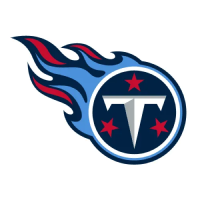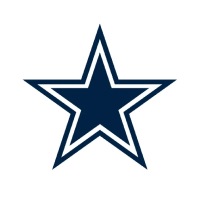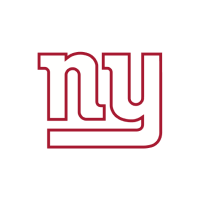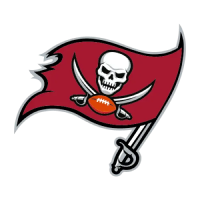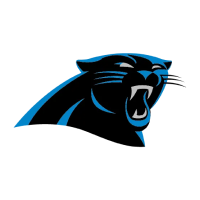The Cleveland Browns losing football games. The Cincinnati Bengals winning football games, then losing in the playoffs. The New England Patriots winning football games, and then winning in the playoffs. The Patriots signing some defensive free agent you’ve never heard of on the sixth day of the new league year, then turning him into a stud contributor by kickoff in September.
These were the constants on which you could rely over the last 20 years of NFL football. New England dominated in large part because of their roster management, as unflinching defensive guru Bill Belichick turned a nomad special teamer into Rob Ninkovich and an imperfect fit at DE and LB into a perfect hybrid player in Mike Vrabel. The splash signings like Darrelle Revis and Rodney Harrison, when they came, were usually hits—but it was the constant success rate in the latter days of free agency that truly made the Patriots’ wheels spin.
The Patriots have seemingly always been frugal free agent spenders. Jason Fitzgerald looked at the last four years of NFL free agency and found that no team had spent less per free agent than the Patriots. This phenomenon can’t be explained away with an argument of quality drafting and development: the Patriots have been shaky drafters over the same timeline.
But if they aren’t adding top players in the draft or in free agency, how have they been winning so much for so long? Up until last season, that question had two answers. The first was a nuanced one: Belichick was such a clever, forward-thinking head coach that he could sign cheaper free agent contracts—middling deals for middle-tier players—and still turn those players into high-value contributors who outproduced their price tags. The second answer: Tom Brady was really freaking good.
But now Brady is gone, left for the warmer weather and loaded roster of Tampa Bay, where he’s already won his seventh Super Bowl and is in pursuit of his eighth. When Brady left New England, he was still Brady—but he was leaving a depleted roster and an anemic offense with little hope of a sudden revitalization. The Patriots weren’t drafting well, had little cap room to solve their problems in free agency, and suddenly took some unexpected hits with COVID-19 opt-outs on the defense.
They weren’t a good football team. Sure, they had gone 12-4 the season past and made the playoffs, but the outlook was bleak and they took their first Brady-less year on the chin. Belichick himself said during the Patriots’ first three-game losing streak of the last 18 years: “We were pretty heavily invested in our team in the past few years. From a salary-cap standpoint, we didn't have much flexibility at all…[T]his is kind of the year that we've taken to, I would say, adjust our cap from the spending that we've had in accumulation of prior years. We just haven't been able to have the kind of depth on our roster that we've had in some other years.” When you have no cap space, you have to add cheap talent in the draft to survive—but without a drafted Pro Bowler in the last seven classes, New England’s cupboards were suddenly bare.
In the 2020 season, the Patriots didn’t have either of their answers. Brady was gone, and their aggressive pushes to build competitive rosters in his final few years in New England had left the Patriots without the cap space to rebuild in his absence. Even for Belichick’s bottomless creativity—he was playing a 5-foot-9, 185-pound nickelback at dime linebacker—the Patriots were only able to eke out seven wins.
Brady? In Tampa Bay? He eked out a few more.
Now Belichick remains as the only answer in New England: only his machinations, eternally praised but never fully exposed against the safety net of Brady’s singular play, can turn the Patriots around. Back comes Cam Newton on another cheap deal, a bridge quarterback that gives Belichick the ability to dominate the red zone with the QB run game and a functional passer when healthy. Back comes Dont’a Hightower, the dominant downhill thumper, and Patrick Chung, the interchangeable safety, both COVID-19 opt-outs and critical pieces to the Patriot defense.
And here comes Matt Judon, a classic Patriot EDGE who can rush from a wide, stand-up alignment while still providing high-quality, physical run defense. Here comes Jalen Mills, with starting experience at outside corner, slot corner, and box safety, and a physical brand of man coverage and run support he’s brought to each position. Here comes Nelson Agholor, a field stretcher with route-running ability who brings much-needed verticality to an offense that has cycled through Brandin Cooks and Philip Dorsett in recent seasons; and Kendrick Bourne, a highly effective route-runner and red zone target who can work the slot separator role that’s always been paramount in Josh McDaniels’ offense. Here comes the entire tight end free agent market, as Belichick has delivered top-five tight end contracts to both Hunter Henry, a flex tight end with a full route tree and stick-moving consistency, and Jonnu Smith, a unique run-after-catch athlete ideal for schemed touches. Do two elite tight ends sound at all Belichickian to you?
https://twitter.com/AlbertBreer/status/1371832492005675012
They were all free agents yesterday; they’re all Patriots today. But, as is critical in free agency, they all seem like Patriots. Sure, Henry and Agholor probably would have fit for most teams—but they fill roles the Patriots have historically prioritized, yet had vacant for last season. Players like Smith, Judon, Mills, and Bourne? Those are Patriot Way players, through and through.
The surprise isn’t how much Belichick likes these players. The surprise is how much he paid for them.
$50M over four years with $32M guaranteed doesn’t just make Smith the owner of a top-three tight end contract in the league; it makes him the highest-paid skill position player in franchise history. Henry comes at the same average annual value, and even more guaranteed money per year, with one less year on his deal: 3 years, $37.5M, $25M guaranteed. $56M over another four years and another $32M guaranteed makes Judon the highest-paid defender in franchise history—remember, this team had Revis and currently has Stephon Gilmore! They were once filling this role with cheap targets like Ninkovich and Vrabel!
Agholor’s $26M over two years puts him just on the edge of a top-20 wide receiver contract in average annual value, just one offseason after he was available for a one-year, $1M contract for the Las Vegas Raiders. The structure of Agholor’s deal may make it effectively a one-year contract. Such is the case with Jalen Mills, whose four-year, $24M deal—perhaps the most eye-popping overpay of the bunch, at face value—is really a two-year, $11M deal that will almost certainly see an extension or a cut by 2023. Bourne is similarly in a low-guarantee three-year deal. As always, the contract details of guaranteed money and when it activates matter more than total figures.
But even with shrewd contract language considered, this is still a massive departure from the Patriot Way of seasons past. The Patriots didn’t sit out the first day of free agency; nor did they just dip their toe into the waters with one quick, solid deal before scurrying back to their shells. They were the first day of free agency; and with the Henry signing, they’ve set the tone for Day 2 as well.
The sudden aggression can be best characterized as Belichick, unchained. Not only is Brady gone, leaving the Patriots with more cap space to burn and more talent needed across the board to return to their winning ways, but so is Nick Caserio, Belichick’s longtime partner in team-building now departed for the general manager job title in Houston.
Yes, Belichick has been the acting general manager in New England during their sustained excellence of the last two decades, but that model has rarely been replicated with any success elsewhere. As Bill O’Brien reminded us in Houston, when a head coach gets general managerial powers, the balance of the franchise is thrown out of the window. Coaches want to win now, so they often make wildly aggressive, short-sighted moves—like trading multiple first-round draft picks for Laremy Tunsil, or shipping away an alpha personality in DeAndre Hopkins—that a responsible general manager, who wants a healthy roster in the long term, would caution against.
In the case of New England, a trusted general manager and longtime co-worker like Caserio might remind Belichick: just because you have cap space and these players are Patriot fits doesn’t mean we have to outbid the entire market to get them on Day 1. We can be patient here.
But again: this is Belichick unfettered, uninhibited. Armed with tons of cap room in a buyer’s market and provoked by Brady’s blatant success without him, Belichick lashed out at free agency, diving headlong into a gluttonous spending spree that gave no interest in perceived market value or long-term stability. His roster was bad; these players would fix it; so he got them.
Despite the decisively non-Patriot recklessness of the approach, it will probably still work. The Patriots are about to get a lot better. Even with a big question mark still remaining at quarterback, they just gave a bunch of very good players to a head coach who has historically maximized lesser free agents—with higher-tier players, he figures to do big things. Nobody will care that Judon got $14M per year instead of $12.5M if he has his first season of double-digit sacks next year. Smith and Henry will never be put in the conversation with Travis Kelce and George Kittle as the best tight ends in the league, but if the Patriot passing game catapults into competitiveness after last year’s consummate faceplant, nobody will care that they’re overpaid. Nobody will care that Dalton Keene and Devin Asiasi, both drafted in the third round, are now depth chart fodder; nobody will care that N’Keal Harry was one of the worst wide receiver picks in the last few years of talented classes. Winning cures all ills, and nobody wins like Belichick does.
So the new Patriot Way is still the old Patriot Way. Scheme fits, guys who are willing to fall in with the culture, play good defense, find exploitable edges on offense, dominate. It’s just a little more aggressive, as the filters which prevented Belichick from going full Belichick—the trust Caserio had earned, the floor Brady had offered—have fallen away. The Patriots have always been Belichick’s team, and that’s always worked for them. But a smudge of doubt has been introduced to that gleaming legacy, and Belichick already seems hellbent on buffing it out.
Filed In
Related Articles
NFL Draft
Arik Gilbert Doesn’t Need Big Workload To Be A Top NFL Draft Pick
- Aug 22, 2022
NFL Draft
2023 NFL Mock Draft: Marino 1.0
- Aug 22, 2022
Written By









